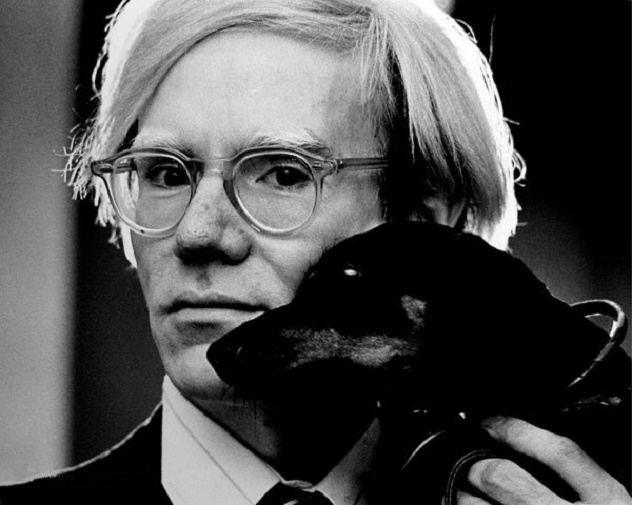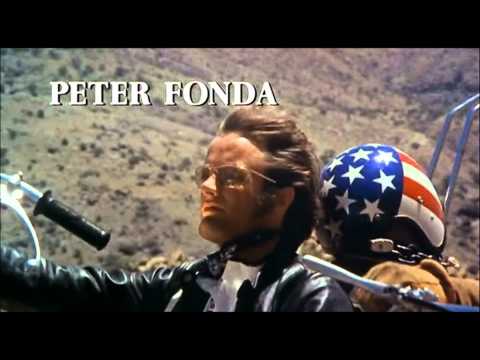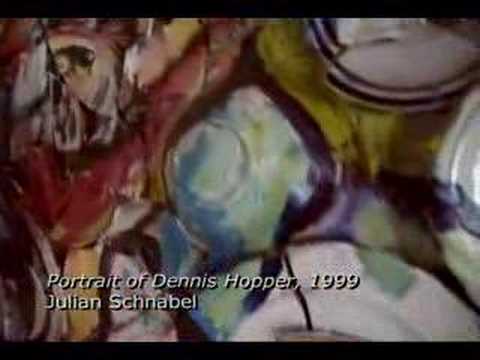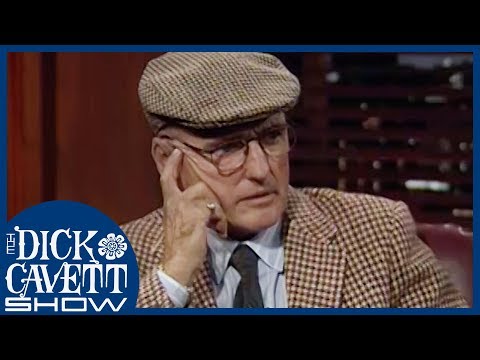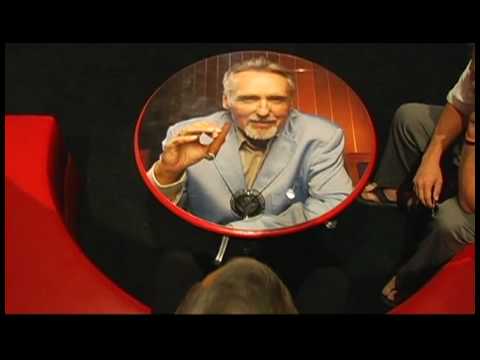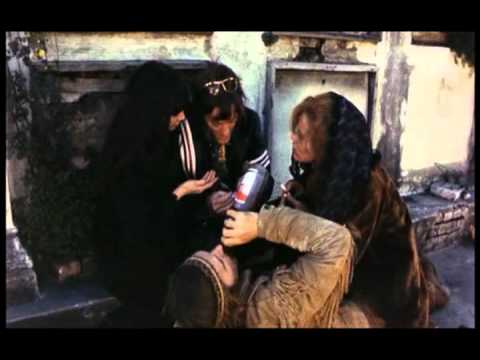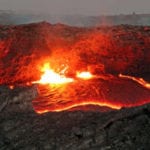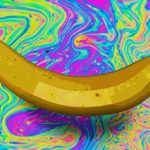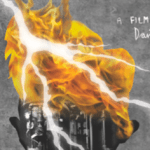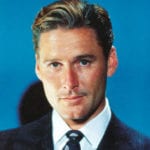10Hanging Out With Elvis
In 1956, Elvis Presley arrived in Hollywood. Over the course of 18 months, he starred in four movies, the idea being that these films would be slowly released while Elvis was serving a two-year stint in the army, keeping his profile as high as possible. During this time, Elvis was especially interested in talking to anybody who had been close friends with one of his favorite actors, James Dean, who had died in a car accident the previous year. Elvis quickly befriended a 21-year-old kid named Dennis Hopper, who’d starred alongside Dean in both Rebel Without a Cause and the posthumously released Giant. According to Hopper, who spent a couple of weeks hanging out with Elvis, there was an amusing conversation where Elvis confided that he was worried about a scene in his upcoming movie—Love Me Tender—where he had to hit a woman. Elvis wasn’t concerned about setting a bad example; he was convinced that he’d have to hit the actress for real. When Dennis Hopper patiently explained that he’d only have to act like he was hitting the actress, it soon became apparent that Elvis didn’t understand that violence in movies wasn’t real.
9He Was Blacklisted From Hollywood For Eight Years
In 1958, Dennis Hopper had a bright future ahead of him. At just 22 years old, he’d worked with some of the best actors in Hollywood and had received acting advice from costars like James Dean. However, when he began work on From Hell to Texas, the director, Henry Hathaway, told him that none of that mattered. He didn’t require method actors. He required people who’d shut up and do what they were told. Clearly, this would lead to some major tension. Hathaway and Hopper clashed repeatedly throughout the shoot, constantly screaming and cursing and blaming each other for their behavior. The final straw came while filming a simple 10-line scene. Hathaway told Hopper that he had enough film stock to film for four months, and Hopper couldn’t leave until he delivered the line the exact way he wanted. Eighty-six takes later, Hopper broke down and started crying before admitting defeat and doing the scene the way Hathaway wanted. Hathaway then walked up to Hopper and said “Kid, you’ll never work in this town again.” For a while, this looked like it might be true. Hopper claimed Hathaway got him blackballed from Hollywood. He would be on the Hollywood blacklist for eight years, with no major studio wanting to hire him.
8He Photographed Icons
After he was effectively banished from Hollywood, Dennis Hopper moved on to art. He’d once been encouraged to try photography by James Dean; with little acting work available, he decided that he’d finally give it a try. During this time, he won an international photography competition and was widely published in magazines such as Artforum, using his photography to befriend the famous ’60s soup can artist, Andy Warhol. One of Hopper’s pictures of Andy Warhol even appeared on the cover of Artforum (the first picture of Andy Warhol ever to be published on a magazine cover). He also designed album covers for performers such as Ike and Tina Turner, as well as photographing famous actors, musicians and artists. Not content with simply photographing famous pop culture icons, Hopper also captured some of the pivotal events of the civil rights movement. He took some very close-up photos of Martin Luther King delivering a speech during the 1965 Alabama Freedom march and hitched a ride to Selma with his friend Marlon Brando (a well-known supporter of King). Hopper described it as a harrowing experience: “Brando got me involved . . . He pulled up in his car and said, ‘What are you doing day after tomorrow?’, and I said, ‘Nothing,’ and he said, ‘You want to go to Selma?’ And I said, ‘Sure, man. Thanks for asking me!’ [When we got there, police] dogs were biting, and people were being bombed, and it was like, ‘Where are we?‘ ” Hopper admitted that he made little-to-no money through his art. Nevertheless, Hopper was at ground zero of the counterculture movement (even purchasing Warhol’s very first soup can print for just $75). His photos, which have recently reemerged, have been exhibited at the Royal Academy of London, and art critics (even though these things are highly subjective) insist that they are pretty good. Whether you agree or not, they are still a fascinating glimpse into life in the 1960s. Check out the short documentary above to see a few for yourself.
7John Wayne Once Threatened To Kill Him
By 1965, Dennis Hopper was allowed back into Hollywood after being recast by the same guy who’d kicked him out (Henry Hathaway) for 1965’s The Sons of Katie Elder. A few years later, he starred alongside John Wayne in True Grit. According to Hopper, he had a fairly amicable relationship with Wayne, for the most part. Wayne dished out friendly advice on acting and life, and the two got on fairly well. However, one day, John Wayne allegedly tried to kill him. Wayne, who was a right-wing conservative, thought of Hopper as his very own “in-house commie.” Whenever some new political development disturbed or troubled him, Wayne would come after Hopper (whom he referred to as a “pinko“). According to various sources, Wayne arrived on set one day via helicopter, angry that his daughters had attended a UCLA lecture by a civil rights activist, screaming, “Where’s that pinko Hopper?!” To make matters worse, Wayne was also carrying a gun on his belt. If Biskind’s book is to believed, Hopper spent the rest of the afternoon hiding in a cupboard while John Wayne stalked about, saying things like “I want that red motherf—r. Where is that commie hiding?”
6He Was Once In A Knife Fight With Rip Torn
Jack Nicholson’s breakout role was the good-hearted drunken small-town lawyer, George Hanson, in the film East Rider. However, originally that role was to be filled by Rip Torn, the actor who’s probably better known now as Agent M from 1997’s Men in Black. According to Dennis Hopper’s version of events, a story he often told during television interviews, Torn was fired after he tried to attack Hopper with a knife at a dinner party. However, Hopper’s story wasn’t true. Torn would later sue, alleging the story was libelous and had had a negative effect on his career—nobody wants to hire an actor who brandishes knives for no reason. Torn won the case when two of the other guests present at the actual dinner party backed up his version of events. He was awarded $1 million in damages. According to Torn, this is what really happened. In 1967, Peter Fonda, Rip Torn, a writer named Terry Southern, and his wife were all eating dinner at an LA restaurant when Dennis Hopper arrived, fresh from location scouting in Texas, complaining about “intolerant Texans.” Torn (a Texan, himself) told Hopper not to generalize then held his hand out in a conciliatory gesture. Hopper slapped his hand away, and said “Sit down, you motherf—r,” picked up a steak knife, and pointed “it right between Torn’s eyes, a few inches from his forehead.” A tussle ensued. Torn grabbed Hopper’s wrist and twisted it until the knife dropped then picked it up and pointed it at Hopper. If that sentence has not convinced you that Rip Torn definitely deserves his ridiculous surname then Torn’s reply to Hopper’s offer to step outside just might: “I’ll wait for you in the street. Bring your knives. Bring your guns. Bring your pals, and we’ll find out in about three seconds who the punk is.” Torn then went outside, brandishing a trash can lid as a makeshift shield just in case Hopper decided to start shooting. (Hopper usually carried a loaded pistol.) Hopper didn’t go outside.
5Dennis Hopper And Peter Fonda Feuded Over Easy Rider For Decades
When Dennis Hopper and Peter Fonda set out to make Easy Rider (originally titled The Loners), nobody thought they would succeed. And rightly so. They had no script and no relevant experience. Hopper, who had never directed, was to direct, and Fonda, an actor, was to produce. They tried pitching to large studios such as AIP, but nobody wanted to take a risk on an idea that seemed as doomed as theirs. Eventually, Bob Rafelson and Bert Schneider of Raybert Studios (creators of The Monkees) agreed to finance them. They received a check for $40,000 and immediately assembled a ragtag crew of hippies with little to no experience, traveling to New Orleans to film what would become the Mardi Gras scene. They still had no script. At several points, it looked like the film might never be completed. Hopper tended to get into bizarre and extended rants. At one point, he ended up in a violent brawl with one of his cameramen, prompting 17 members of his crew to quit. Hopper and Fonda then fell out after Hopper convinced Fonda to use the pain of his real-life mother’s suicide in the scene where Fonda sits on the statue of Madonna during the LSD sequence. Fonda began secretly recording Hopper’s behavior, as he ranted on for hours at a time, with the intention of lobbying the studio to get him fired. Fonda was so scared of Hopper that he even hired a bodyguard and started carrying a gun. He was convinced that Hopper was going to kill the movie—an assertion not helped when Hopper spent 22 weeks haphazardly editing the film before being locked out by the studio. However, despite all this, Easy Rider went on to become a smash hit that nobody would have anticipated. A largely improvised film made on a budget of just over half a million dollars, it went on to gross more than $60 million, becoming the first independent film to be distributed by a major studio. Film changed, practically overnight. Yet, despite their success, Hopper and Fonda never really managed to reconcile. The main bone of contention among them was how the credits for Easy Rider were shared—Hopper always maintained that he had written most, if not all, of the script; Fonda claimed that his own input was nearly sizable. Their very public feud (and the occasional lawsuit) continued until Hopper’s death in 2010. When Fonda flew to Taos, New Mexico, for Hopper’s funeral, he was told that he couldn’t attend the service. One of Hopper’s dying wishes was that Fonda be banned from his funeral.
4He Once Shot An Andy Warhol Painting
As we mentioned, Hopper was a prolific art collector and close friend of Andy Warhol. In 1972, Hopper bought one Warhol’s pieces, a large print of a blue-faced Chairman Mao. According to Alex Hitz, a longtime friend of Hopper, “One night, in the middle of a binge, Hopper, out of the corner of his eyes, saw the Mao, and he was so spooked by it that he got up and shot at it, twice, putting two bullet holes in it.” When Warhol found out what Hopper had done, he was surprisingly calm about the whole thing. Rather than get mad about the bullet holes, he made the print a collaboration and annotated the holes. He called the first hole, which had gone slightly high over Mao’s shoulder, “warning shot.” The second, a direct hit just above Mao’s left eye, received the slightly less imaginative “bullet hole.” After Hopper’s death in 2010, the shot-up Andy Warhol sold for $302,500 (£193,00) at auction, 10 times its estimate. As a final note, please don’t try shooting any artwork you own; 99.9 percent of the time, it won’t increase the value.
3His Australian Film Entry
In 1974, Dennis Hopper was once again struggling to find parts due to his reputation as the wildest man in Hollywood. So when the Australian director Philippe Mora offered him the lead role in an Australian movie about Dan Morgan (a famous Australian bush-ranger, or bandit, who influenced Ned Kelly), he jumped at it. On his first day in Australia, Hopper got arrested. Hopper went full method for the role. He spoke in an Irish accent for the entirety of the shoot, refused to wash (getting so smelly at one point that he reduced a makeup artist to tears), and drank so much that the director was positive that Hopper would die from alcohol poisoning—Hopper was drinking 30 beers and half a gallon of rum per day. The director secretly had Hopper’s likeness molded into masks so that he could finish the movie with long shots and doubles. Things got so bad that the famous aboriginal actor David Gulpilil (Walkabout, Rabbit Proof Fence) disappeared into the Australian bush. When he was tracked down, he explained that he’d been so worried about Hopper’s behavior that he’d gone to ask the kookaburras and trees what was wrong with him. When asked what the kookaburras and trees had said, Gulpilil replied, “He’s crazy.” According to Mora, when filming finished, Hopper “rode off in costume, poured a bottle of O.P. Rum into the real Morgan’s grave . . . drank one himself, [and] got arrested the next day, with a blood alcohol reading that said he should have been clinically dead, according to the judge studying his alcohol tests. ”
2The Russian Suicide Death Chair
By the early ’80s, Dennis Hopper’s drug and alcohol problems were growing dangerously out of control. He was drinking a gallon of rum each day and doing 3 grams of coke. For reasons that were most likely drug-induced, he began to have delusions that the mafia had put a hit on him. Whether this is true or not is anyone’s guess—Hopper claimed that he once followed one of these hit men and pulled a knife on him, but it’s also possible that he just scared the bejesus out of some poor bystander. Reasoning that he was probably going to be killed by the mafia anyway, Hopper decided to do a dangerous magic trick called the “Russian Suicide Chair.” The trick involves stuffing a chair with six sticks of dynamite, yet leaving a hollow recess, just large enough for a person to squeeze into, so that the explosion produces a vacuum that acts as a sort of safe zone. Legend has it that this is a trick that the Bolsheviks would use during the Russian Revolution to carry out fake executions. After a screening of his 1983 film Out of the Blue in Houston, Hopper announced to the audience that he was going to blow himself up in the parking lot. The Houston fire marshals forbade this, for obvious reasons, so Hopper bused the entire audience to the nearby Big H Speedway instead. The drunken rabble watched Hopper nervously light the fuse. The dynamite exploded, and Hopper emerged from the smoke completely unharmed. He did, however, have trouble hearing for the next few weeks. You can see the entire thing in the above video.
1He Lost His Mind After Being Spiked With LSD
After surviving all the madness of films like Easy Rider and Apocalypse Now, the film that actually drove Dennis Hopper over the edge was a little-known B movie called Jungle Warriors. The plot, such as it is, involves a group of models who survive a plane crash only to be captured by a South American drug lord. Hopper was offered an obscene amount of money for a part that only had 17 lines. Naturally, he accepted and traveled to the filming location—Cuernavaca, Mexico. However, after downing some complimentary shots of tequila he found waiting for him in his hotel room, he was suddenly beset by extreme and cruel hallucinations. He stripped off all his clothes and wandered off into the jungle—he later came to believe that the tequila had been laced with LSD. “The third world war was actually happening,” he would go on to explain, “and I was being guided by a spaceship that was controlling my mind, and so I wasn’t sure whether I was to walk to the United States or all the way down to the tip of South America.” He was found hurling rocks at passing cars on a busy road the next day. When some local policemen tried to get him to put on clothes, he fought them and begged them to kill him. He was then taken to a local hospital. Eventually, some crew members came to collect him, bundling him onto a chartered plane back to the United States. During the flight, Hopper hallucinated that he was acting in a scene for Francis Ford Coppola that required him to climb onto the burning wing of a plane. (In actuality, he was trying to open the emergency door during takeoff.) Luckily, disaster was averted when some members of the film crew’s stuntmen grabbed him and held him down. The nightmare didn’t end there. After returning to LA, Hopper ended up institutionalized after experiencing a bad case of alcohol withdrawal (remember—he drank half a gallon of rum per day) and became psychotic. He was injected with the antipsychotic drug Prolixin, reacted badly, and developed drug-induced parkinsonism. For months, Hopper was practically locked into his own body, with even the most basic of movements impossible without tremendous effort. Eventually, after deciding to kill himself, he was persuaded to see one more doctor. This was very lucky, as the other doctor informed him that the previous one had not injected him with enough of the drug used to combat the effects of the Prolixin. After a quick injection, the parkinsonism disappeared entirely. After a few more stays in rehab, Hopper kicked alcohol and drugs forever, remaining sober for the rest of his life. Aaron Short is an Edinburgh-based student who has previously written for both Cracked and Listverse.


